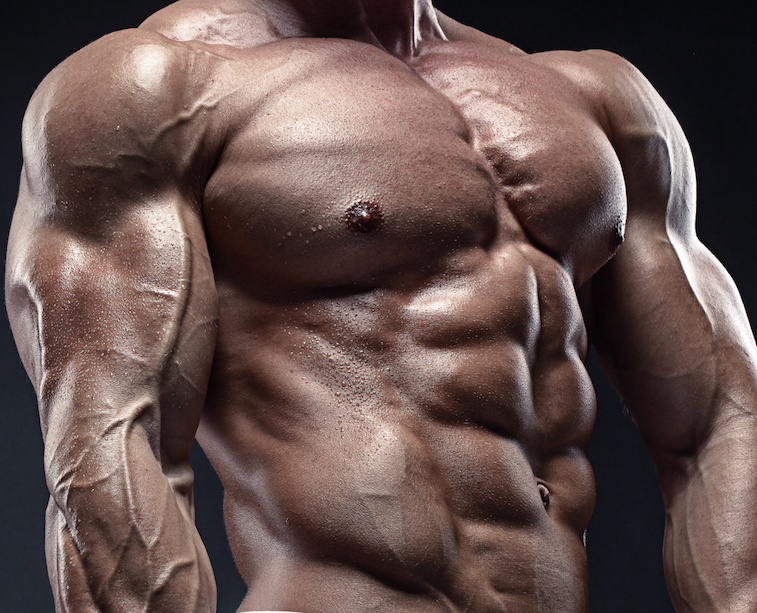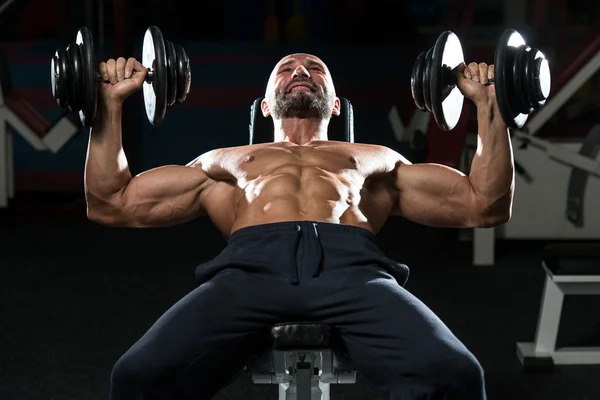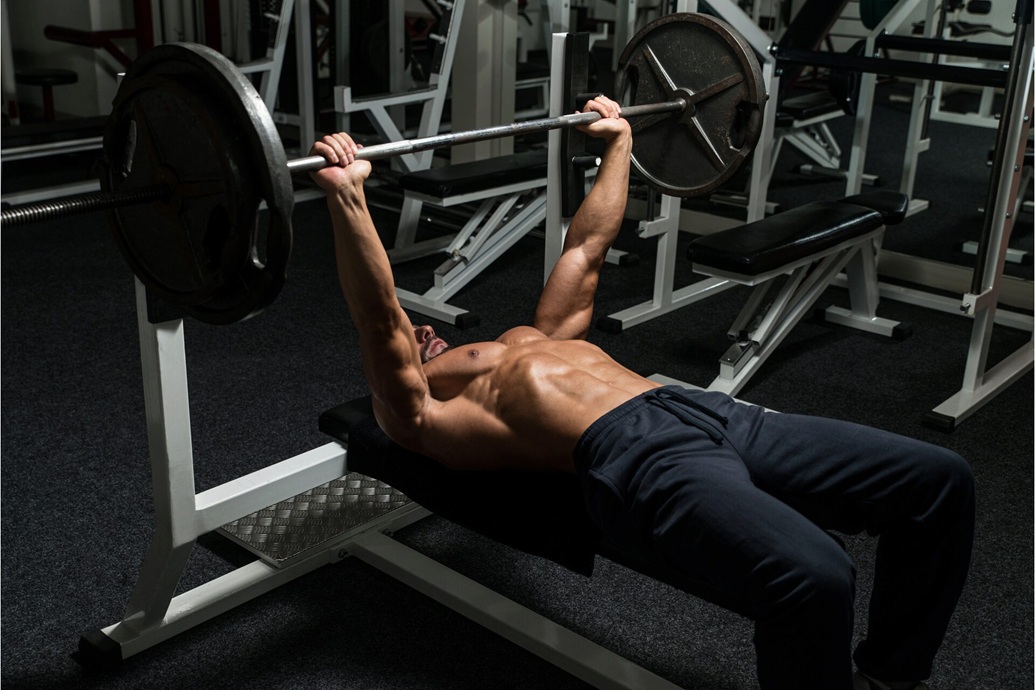How Do Bodybuilders Train Their Chest?
Science-Backed Strategies for Building a Bigger, Stronger, and Balanced Chest
A well-developed chest isn’t just a showpiece—it’s a hallmark of balanced physique aesthetics and upper-body power. In bodybuilding, a chiseled chest signals not only hard work but also smart, strategic training.
So how do top bodybuilders train their chest to achieve thick pecs with striations and symmetry? In this guide, we’ll break down the science, structure, and secrets of high-level chest training—from muscle anatomy to exercise selection, volume targets, and advanced techniques.
📚 Chest Muscle Anatomy: Understanding the Target
Before discussing training strategies, let’s understand what we’re actually trying to build:
The chest is primarily made up of two muscles:
- Pectoralis Major – The largest muscle of the chest, split into:
- Clavicular head (upper chest): Activated during incline pressing movements.
- Sternal head (mid and lower chest): Dominant in flat and decline pressing.
- Pectoralis Minor – A smaller muscle underneath the major; helps with scapular movement and stability.
Should you target all parts?
Yes. A well-rounded chest isn’t built by bench pressing alone. Strategic variation in angles and loads ensures full pec development.
🧬 The Science of Hypertrophy: Chest-Specific Principles
According to leading hypertrophy researcher Brad Schoenfeld, muscle growth requires three main stimuli:
Mechanical Tension – Heavy loads through a full range of motion.
Metabolic Stress – The “burn” from high-rep sets or drop sets.
Muscle Damage – Controlled microtrauma from training.
Bodybuilders incorporate all three principles—especially mechanical tension and metabolic stress—into their chest routines to maximize growth.
📊 Weekly Training Volume: How Much Chest Work?
Research recommends 10–20 sets per week per muscle group for hypertrophy, depending on your experience and recovery.
- Beginners: 10–12 quality sets/week
- Intermediates: 12–16 sets/week
- Advanced lifters: 16–20+ sets/week
👉 Most bodybuilders train chest once or twice per week, using a mix of compound and isolation exercises.
🧱 The Core of a Bodybuilder’s Chest Day: Key Exercises
🔥 1. Incline Barbell Press – Upper Chest King
- Targets: Clavicular head of pec major
- Why bodybuilders love it: Upper chest lag is common; incline pressing helps correct it
- Tip: Use a 30–45° incline to maximize upper pec recruitment
🔥 2. Flat Dumbbell Press – Mass & Range of Motion
- Targets: Mid-pecs
- Dumbbells allow for a deeper stretch and greater range than barbells
- Bonus: Helps correct side-to-side imbalances
🔥 3. Decline Press (Barbell or Machine) – Lower Pec Focus
- Emphasizes the sternal/lower portion of the pecs
- Many pros use this to fill out the bottom of the chest for that full “shelf” look
🔥 4. Cable Crossovers/Fly Variations – Isolation & Shape
- Great for constant tension and peak contraction
- Angles can be changed to hit different pec regions
- Also useful for building that deep “pec line” down the center
🔥 5. Pec Deck Machine – Controlled Isolation
- Excellent for metabolic stress
- Focus on slow eccentrics (3-4 seconds) and holding the squeeze
🔥 6. Push-Ups (Weighted or Deficit) – Finisher or Pump Work
- Underrated for activation and endurance-based training
- Perfect for high-rep finishers or bodyweight sessions
🧠 Mind-Muscle Connection: Critical for Bodybuilders
Top-level physique athletes focus intensely on the mind-muscle connection—feeling the pecs contract throughout the movement.
Practical Tips:
- Warm up with light flyes to “prime” the pecs
- Reduce load slightly if your triceps or delts take over
- Visualize your pecs shortening during each rep
📌 A 2018 study published in European Journal of Applied Physiology found that consciously focusing on contracting the pecs increased muscle activation vs. simply moving the weight.
🕑 Tempo, Rest, and Range of Motion
✅ Tempo
- Control the eccentric (lowering) phase for 2–4 seconds
- Pause briefly at the stretch position
- Explode concentrically (lifting)
✅ Rest Periods
- 60–90 seconds for hypertrophy
- 30–45 seconds during finishers for metabolic stress
- Longer rest (2–3 minutes) for heavy compound lifts
✅ Range of Motion
- Lower the weight until the pecs are fully stretched
- Avoid cutting reps short—full stretch = full activation
📋 Sample Chest Workouts
🏋️♂️ Beginner Chest Day (Once Weekly)
- Flat Dumbbell Press – 3 x 10–12
- Incline Machine Press – 3 x 10
- Cable Crossover (Low to High) – 3 x 15
- Push-Ups – 2 x AMRAP
Total: 11 sets (Great for growth with recovery)
💣 Intermediate Bodybuilder Chest (2x Weekly Split)
Day 1 – Strength & Volume
- Incline Barbell Press – 4 x 6–8
- Flat Dumbbell Press – 3 x 10
- Cable Fly (High to Low) – 3 x 12–15
- Machine Chest Press – 2 x drop set
Day 2 – Isolation & Pump
- Decline Dumbbell Press – 3 x 10–12
- Pec Deck – 3 x 15
- Cable Fly (Low to High) – 3 x 12
- Push-Ups – 2 x failure
Total: ~26 sets/week
💡 Advanced Tactics Used by Bodybuilders
🔄 1. Pre-Exhaust Supersets
- Example: Pec Deck → Flat Press
- Isolate the pecs before pressing so they take over, not your triceps
⏱ 2. Rest-Pause Training
- Do 8–10 reps to failure, rest 20 seconds, then do 2–3 mini sets
- Builds intensity and mechanical tension
🎯 3. Angle Variation
- Slight incline, decline, flat, and standing flyes
- Trains fibers through full motion and stimulates balanced growth
💥 4. Training to (and Beyond) Failure
- Use advanced techniques like forced reps, partials, and negatives
- Only appropriate for experienced lifters with good recovery

🧃 Nutrition & Recovery: Don’t Neglect the Basics
Chest won’t grow without recovery and proper fuel.
📌 Key Nutrition Rules:
- Protein: Aim for 1.6–2.2g/kg bodyweight daily (or ~1g/lb)
- Carbs: Don’t fear them—fuel your workouts and recovery
- Creatine monohydrate: Backed by research for muscle growth and performance
- Hydration & electrolytes: Support muscle contractions and fullness
💤 Sleep:
Sleep is essential for hormone optimization and muscle repair. Aim for 7–9 hours per night.
⚠️ Common Chest Training Mistakes
- Using too much weight → Poor form and deltoid/triceps takeover
- Neglecting upper chest → Leads to imbalanced look
- Short ROM on presses/flyes → Less activation, less growth
- Overtraining → Chest doesn’t need daily attention to grow
- Ignoring rear delts and posture → May cause shoulder issues long-term
🔁 Chest Training Frequency: 1 or 2 Times per Week?
🧪 Science says:
- For most lifters, training chest 2x per week leads to better hypertrophy than once per week.
👉 This doesn’t mean you need 40 sets/week—split your volume smartly and recover well.
🏁 Final Takeaways
Bodybuilders don’t just press heavy weights—they train with intention. To develop a big, balanced, and defined chest:
- Master both compound and isolation exercises
- Use volume progression, varied angles, and controlled reps
- Train with feel, not just brute force
- Prioritize recovery, nutrition, and balance
A well-built chest isn’t an accident—it’s a result of smart, consistent, and strategic training over time. Whether you’re a beginner chasing first-time pec pumps or a veteran refining your upper chest line, these principles will guide you toward your muscle-building goals.
📚 References
- Calatayud J et al. (2018). “The importance of mind–muscle connection.” Eur J Appl Physiol.
- Schoenfeld BJ, Ogborn D, Krieger JW. (2016). “Effects of resistance training frequency on muscle hypertrophy.” Sports Med.





